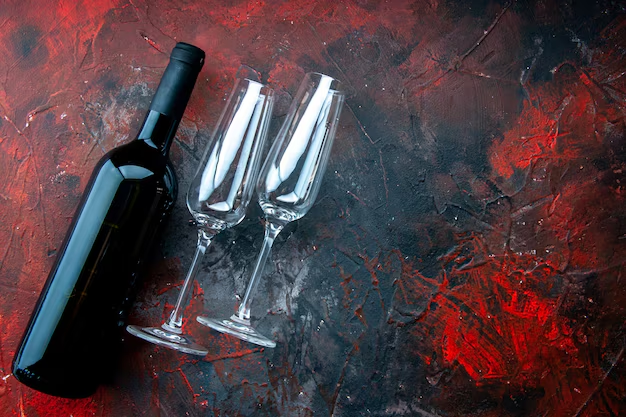How Long Is Opened Wine Good in the Refrigerator? Your Ultimate Guide to Storing Leftover Wine 🍷
Wine is more than just a beverage; it's a passion, a hobby, and for some, an art. Whether you’re a casual wine drinker or a connoisseur, you’ve probably faced the age-old question: How long can you keep an opened bottle of wine in the refrigerator? Uncorking a bottle turns a dormant experience into an enticing exploration of flavor and aroma. But what do you do with the leftovers? In this guide, we’ll dive deep into the nuances of storing opened wine to ensure you savor every last drop safely and deliciously.
🍇 Understanding Wine’s Sheltered Life: What Happens After Opening?
Once a wine bottle is opened, its contents are exposed to air, starting a transformation journey. This interaction, called oxidation, impacts the flavors and aromas that define your wine experience.
Oxidation: Friend or Foe?
While a certain degree of oxidation can enhance wine's complexity, excessive exposure can lead to spoilage. Oxygen is both a friend and a foe, enabling wines to breathe and release their aromas initially, but too much of it hastens wine's decline. Typically, white wines oxidize faster than red wines due to their lack of tannins, which are compounds present in red wine that naturally preserve it longer.
Refrigeration: A Temporary Sanctuary
Placing an opened wine bottle in the refrigerator slows down oxidation, thanks to the cooler temperatures. This approach extends the wine’s life, offering you a larger window to enjoy what's left.
🥂 The Shelf Life of Your Opened Wine: A Breakdown by Type
Different types of wine have varying shelf lives once opened, influenced by their structure, sugar content, and storage conditions.
Red Wines
Red wines tend to fare best after opening. A robust red can last 3 to 5 days in the refrigerator. Tannins and acidity levels help preserve its taste, making it more resilient.
Tips for preserving red wine:
- Use a wine stopper to minimize air exposure.
- Store upright to minimize the wine's surface area in contact with oxygen.
White and Rosé Wines
Fair well for 3 to 5 days as well, albeit sometimes flavor profiles may not hold as strongly as reds post-opening.
Tips for white and rosé wines:
- Refrigerate them immediately after opening.
- Consider investing in vacuum pumps that remove air from the bottle.
Sparkling Wines
Sparkling wines are best enjoyed as soon as possible. Once opened, they lose their fizz rapidly, often within 1 to 3 days. Specialized stoppers can help maintain their effervescence for a bit longer.
Quick tip:
- Store sparkling wines with a dedicated champagne stopper to maintain effervescence.
Fortified Wines
Due to their higher alcohol content and sugar levels, fortified wines like Port and Sherry have a slightly longer shelf life, often up to 28 days when stored properly.
🛡️ Techniques to Preserve Your Wine
Investing in the Right Tools
There are several tools and gadgets designed to extend the life of your wine:
- Vacuum pumps remove air from the bottle, reducing oxidation.
- Preservation sprays inject a layer of inert gas into the bottle to prevent air contact.
- Wine preservation systems offer professional-grade solutions for frequent wine drinkers.
Alternative Storage Options
If your refrigerator is packed, consider storing your opened wine in a cool, dark place. Even outside the refrigerator, lower temperatures will slow the degradation process, keeping oxidation at bay.
❌ Common Mistakes to Avoid
- Avoid re-corking incorrectly: Always insert the cork with the stained side facing down.
- Don’t store bottles on their sides: This increases the surface area exposed to air.
- Never mix old wine with new: It can spoil the entire batch.
🎯 Quick Reference Guide: Key Tips for Storing Opened Wine
Here’s a skimmable guide for quick insights into wine storage:
- Red Wine: 3-5 days
- White & Rosé: 3-5 days
- Sparkling Wine: 1-3 days
- Fortified Wine: Up to 28 days
Essential Tips:
- 🍷 Use a wine stopper.
- ❄️ Refrigerate to slow oxidation.
- 🕓 Store upright.
- 💡 Explore preservation tools.
👀 What to Look for When the Wine Has Turned
No matter how careful you are, sometimes wine just goes past its prime. Here are some signs to watch out for:
- Discoloration: Whites that turn browner or reds that shift to lighter colors.
- Off scents: Musty or vinegary smells are clear indicators.
- Changed taste: If it tastes different or has an off-flavor, it’s past its best.
🤔 How to Use Leftover Wine
When in doubt, find creative ways to utilize your leftover wine.
Culinary Uses
- Cook with it: Wine can add depth and richness to sauces, stews, and marinades.
- Make vinegar: If wine has spoiled, consider turning it into wine vinegar.
Social Uses
- Wine cocktails: Blend leftover wine into refreshing sangrias or spritzers.
- Ice cubes: Freeze wine in ice-cube trays for later use in sauces or cocktails.
🎨 Embrace the Art of Wine Consumption
Understanding how to properly store opened wine in your refrigerator enhances not only its taste but also your appreciation of the craft. Whether savoring vintage reds or bubbly sparklings, knowing these guidelines ensures you enjoy your wine at its peak and maximize its life.
So, the next time you uncork a bottle, cherish the moments and flavors, knowing your leftover wine will be safely waiting for you in the fridge. With this comprehensive guide, your wine storage game is now a sophisticated part of your culinary repertoire. Cheers to flavorful wine adventures ahead! 🍇🥂
